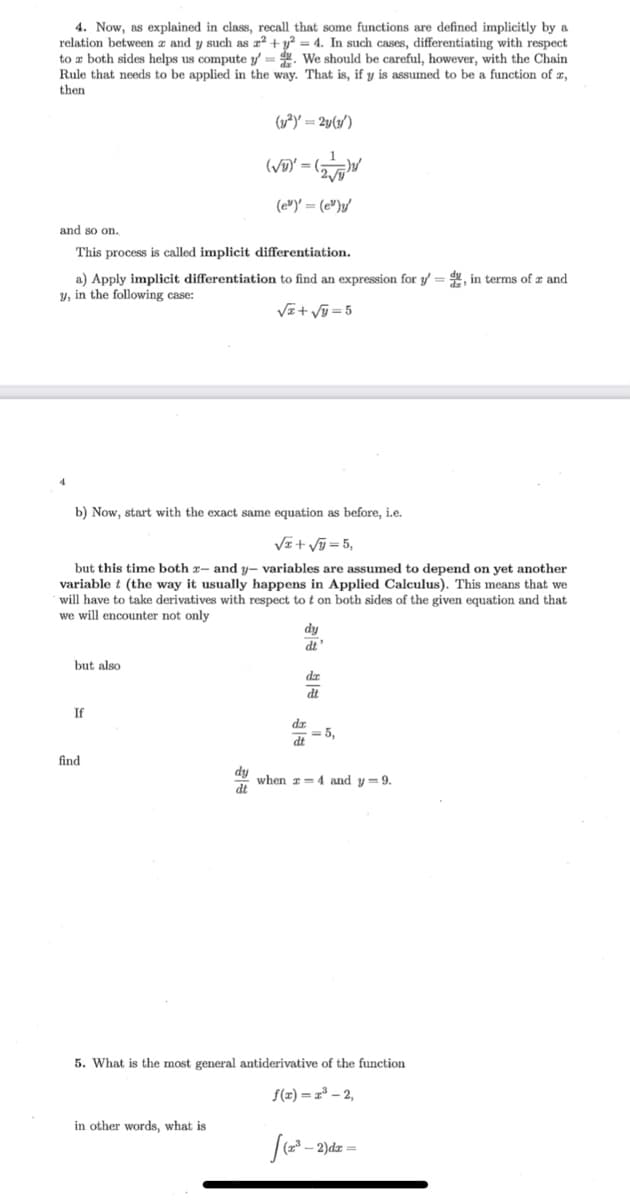Linear Algebra: A Modern Introduction
4th Edition
ISBN:9781285463247
Author:David Poole
Publisher:David Poole
Chapter6: Vector Spaces
Section6.5: The Kernel And Range Of A Linear Transformation
Problem 30EQ
Related questions
Question
100%
Question 4a

Transcribed Image Text:4. Now, as explained in class, recall that some functions are defined implicitly by a
relation between z and y such as r² + y? = 4. In such cases, differentiating with respect
to a both sides helps us compute y = d. We should be careful, however, with the Chain
Rule that needs to be applied in the way. That is, if y is assumed to be a function of æ,
then
(y²Y = 2y(3/)
(e")' = (e");/
and so on.
This process is called implicit differentiation.
a) Apply implicit differentiation to find an expression for y = , in terms of x and
y, in the following case:
VE+ Vũ = 5
4.
b) Now, start with the exact same equation as before, i.e.
VI+ Vj = 5,
but this time both r- and y– variables are assumed to depend on yet another
variable t (the way it usually happens in Applied Calculus). This means that we
will have to take derivatives with respect to t on both sides of the given equation and that
we will encounter not only
dy
dt
but also
dr
dt
If
dr
= 5,
dt
find
lip
when r=4 and y= 9.
dt
5. What is the most general antiderivative of the function
f(z) = x° – 2,
in other words, what is
Expert Solution
This question has been solved!
Explore an expertly crafted, step-by-step solution for a thorough understanding of key concepts.
Step by step
Solved in 2 steps with 1 images

Knowledge Booster
Learn more about
Need a deep-dive on the concept behind this application? Look no further. Learn more about this topic, calculus and related others by exploring similar questions and additional content below.Recommended textbooks for you

Linear Algebra: A Modern Introduction
Algebra
ISBN:
9781285463247
Author:
David Poole
Publisher:
Cengage Learning

Linear Algebra: A Modern Introduction
Algebra
ISBN:
9781285463247
Author:
David Poole
Publisher:
Cengage Learning